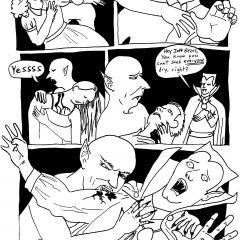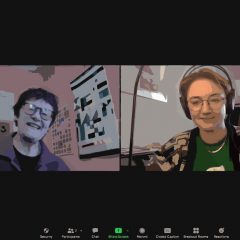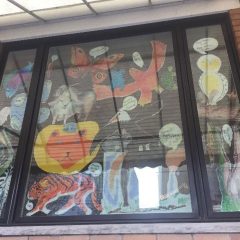[Our U.K. correspondent Katie takes her first trip to South Korea, and gives her account of the country’s lively, welcoming culture. — the Artblog editors]
Almost a fifth of the population of the vibrant and fascinating country of South Korea lives in its technologically advanced capital, Seoul, whose rich and complex culture has been formed by a long and sometimes troubled history. I was lucky enough to spend a few weeks in this surprising city, and though I learnt a lot about enthusiastic Korean hospitality and the many facets of its winding backstreets, I have the feeling that I barely scratched the surface.
Couches and kibun
I was taking the trip to Seoul to co-curate the exhibition of the Bridges Mathart Conference, taking place in the city that year to coincide with the once-every-four-years International Congress of Mathematicians. Interested to learn about a country of which I knew little, and thinking with trepidation of the gruelling 18-hour flight to get there from the U.K., I decided to stay around in the city for as long as I could to try to get a feel for the place. I was on a tight budget and so decided to use couchsurfing.org, a website for finding people interested in hosting travellers, to find accommodation for my trip.
It turned out to be a wonderful way to make new friends and to see the city through the eyes of the people who know it best. I easily made contact with a couple of hosts before getting to the city, who even helped me out with advice and insider knowledge as I planned. It was thanks to them that I found myself spending my first night in Seoul in a rather different, but very uniquely Korean way. With one night to fill before the conference began, I followed my newfound friends’ advice to take the option popular with budget travellers and tired businessmen, and book myself in for the night at a sauna, or jjimjilbang.
For just a $15 entry fee, I had 12 hours’ access to the seven-floor palace that is Silloam Sauna, right by Seoul Station. After abandoning most possessions in the lockers at the entrance, visitors are expected to strip entirely for the various hot and cold baths in the basement before donning the sauna’s T-shirt and shorts to explore the other floors. These were packed with entertainments, TV rooms, exercise classes, yoga–even a cafe and karaoke room–as well as rooms for communal sleeping.
Groups or couples will come to spend the day or evening in these saunas to relax and to spend time together, one of the many rituals that keep the city ticking along. Seeing the importance that Korean culture places on cleanliness, order, and health, I found this a fitting introduction to a remarkably safe metropolis governed by the concept of kibun, which sits somewhere between pride and social harmony.
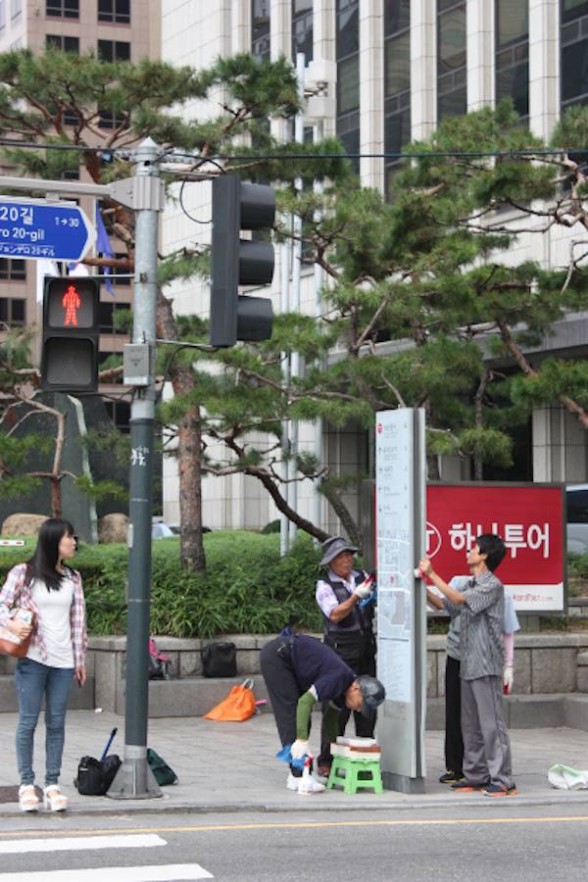
Kimchi, hiking, and nightlife
Any Korean will enthusiastically tell you about the healthiness of Korean food, and they don’t seem to be far wrong. You can eat very well in Seoul, with very cheap, tasty food on every street corner. Some areas are named for their street food speciality–a notable example being Raw Beef Alley, where queues form outside packed restaurants that serve the the incredibly tasty raw beef dish yukhoe. As a spicy food addict, I was in heaven, but I met some fellow travellers along the way who were having difficulty finding milder dishes to suit their tastes; practically every dish contains their famous red chili paste, and though individual dishes are not that hot, the cumulative effect is too much for some.
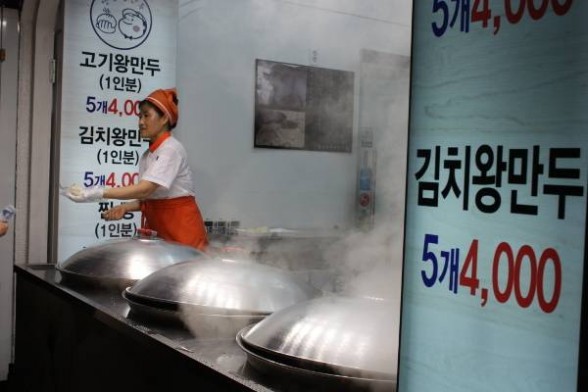
It’s hard to emphasise just how ubiquitous the legendary kimchi is over here. This spicy, fermented vegetable dish is served as a side with almost every meal, and its probiotic properties are much lauded by health-food enthusiasts all over the world. Look into any Korean fridge and you’ll see a collection of boxes, containing various pickles and tasty things, often made by an older family member; families tend to each have their own recipe, a matter of no small pride.
South Korea has an aging population, and I saw something of its character when I decided to take a break from the city, ascending one of the mountains that rise up around Seoul out of its forest of skyscrapers. Dragging myself up a sometimes very tricky route in 30-degree heat (86 degrees F), I was impressed to see pairs and trios of retired folk overtaking me on the way up, decked out in neon North Face gear and with speakers blasting out Trot music from their backpacks. Reaching the top of the mountain, I was both amused and grateful to find a weather station at its peak playing a dramatically-soundtracked information video on an LCD screen and with, joy of joys, a water cooler.
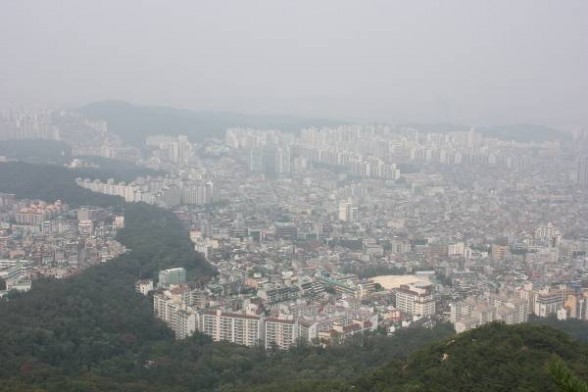
Looking out on my way back, I watched the shimmering city below make its evening transformation from baked grey to coloured neon. I saw that electric city in its full splendour when I stayed a few days with a 24-year-old Couchsurfing host, who showed me something of the younger generation’s city on a night out in Hongdae.
This area, surrounding Hongik University, is legendary for its nightlife and culture. Its streets are packed with performers, synchronised dancers, outlandish fashion, and daylight-bright neon, as well as thumping music spilling out from the doors of clubs. Wandering around at midnight, I was amazed to see hordes of young people doing their clothes-shopping in shops that never seem to shut, mingling with the queue for the enormous singles club, where young Koreans might go to have a laugh with friends while being “matched” with potential suitors. My host commented that in her recent time in Europe, she had loved the cities but often found them dark and quiet at night. I could see why.
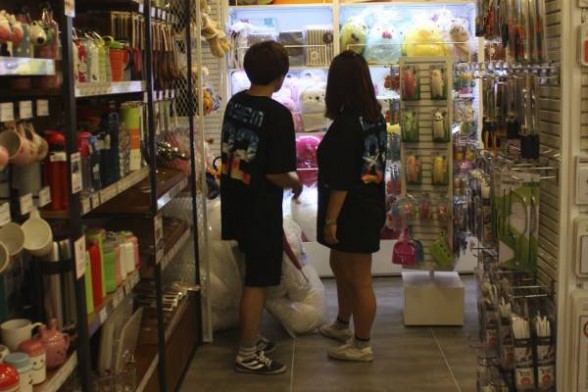
A visit to the DMZ
Some say that these extremes of shopping and modernity have been caused in part by the country’s troubled history–its alliance with the USA differentiating it significantly from its neighbour to the north. At the end of WWII, the country was essentially split into two, the North taken charge of by the Soviets and China and the South by the USA, a highly restricted divide that split families in two. The South became a beacon of “progress” and capitalism, while the North has been largely closed off to the rest of the world.
North Korea’s nuclear program is the subject of significant international tensions, and my host pointed out that while observers abroad often seem surprised by antagonistic actions from the North, people within South Korea take them as a fact of life. A trip to the Demilitarized Zone (DMZ), the 4km margin separating the two countries–that Bill Clinton once described as the “scariest place on Earth”–makes very tangible the tension of a country still officially at war with its only land neighbour.
Many tours are available to take tourists to very carefully selected sections of the Joint Security Area, the area sometimes used for negotiations and meetings of North and South. Under strict U.S. military supervision, we were also able to look out across the depopulated DMZ, now said to be home to vibrant wildlife, at the closest North Korean villages; however, our escorts told us that they believed many of these closest houses to be fakes built to project an impression of prosperity, in the hope perhaps of encouraging South Korean defection.
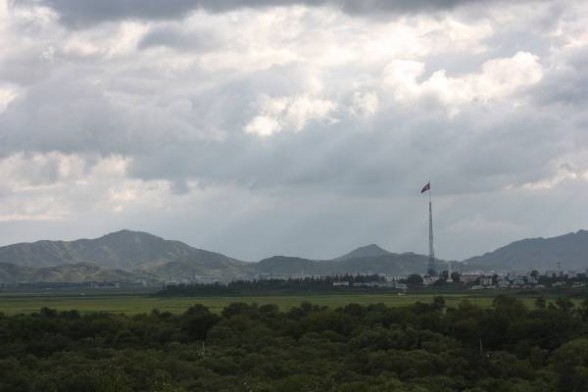
The tour was as strange as it was fascinating; the heavy security underlined to me the seriousness of the situation, and though it’s difficult to spend a day being herded on and off a tour bus, it was worth visiting every one of the gift shops along the way just to marvel at the souvenirs on sale for such a charged destination. Many of the instructional videos and displays coupled optimistic rhetoric about future reunification with damning criticism of the “two-faced” North Koreans and their various attempts to penetrate the borders. My host explained that sadly, though families remain split, the economic and growing cultural disparity between the two countries is making reunification a difficult prospect for South Koreans.
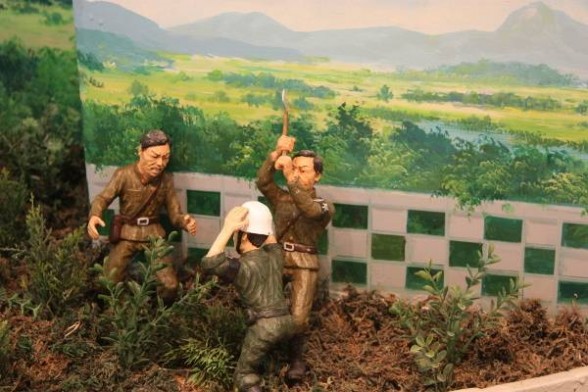
Modern ideas, ancient culture
Alongside all of the drive toward new ideas and ways runs a strong current of tradition, notable in the much-respected customs and respect for family, and the beautiful artifacts from the country’s past. Seoul is packed with palaces, brightly painted in beautiful traditional colours, and a plethora of museums showing off its old treasures and crafts.
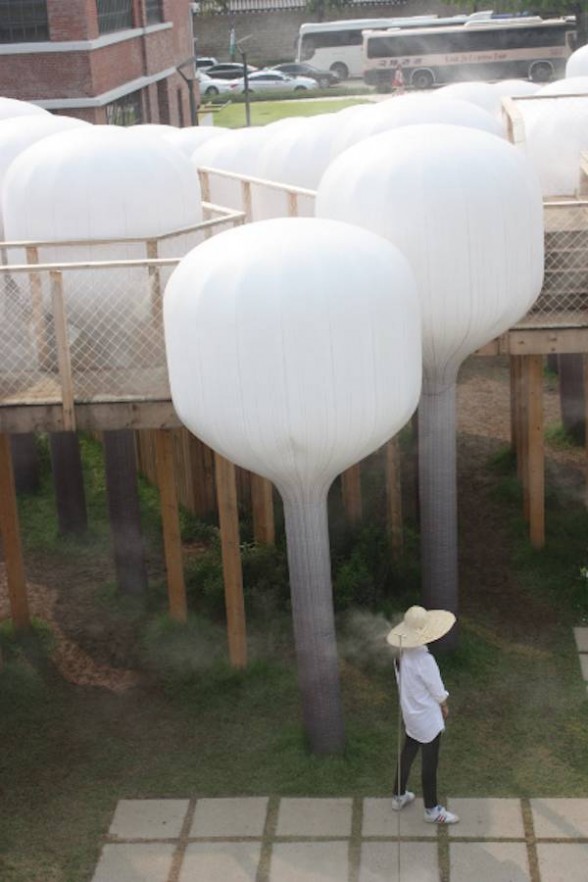
At times, old and new cultures meet; outside one of the Museums of Contemporary Art until Oct. 5 was “Shinseon Play,” a vast installation by Moon Ji Bang–a field of bubbling clouds interspersed with steam jets laid out in a tribute to the myth of Taoist hermits supposed to live up above the clouds playing board games. A combination of cartoon-like modern imagery, the scientific knowledge about the workings of clouds, and the mythology and symbolism of the traditional tale, this work brings together many of the strands that make up this multifaceted city.



